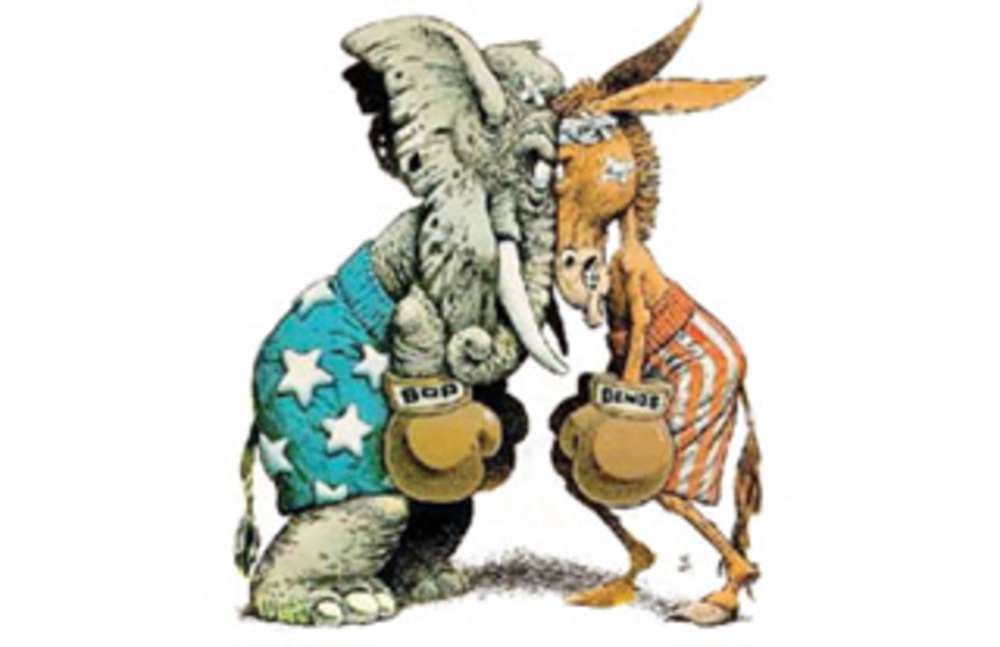The big election is still two weeks off, but the results are in on the candidates’ email campaigns: When it comes to employing state-of-the-art email marketing techniques, the Obama and Romney organizations are both losers.
That’s the assessment of experts at StrongMail, an email marketing provider to companies such MasterCard, Sony, and AT&T. Marketing services professionals at the company compiled and analyzed emails served up by both camps from August 11 to September 10, putting them through the same quality filter they use for their own clients. They awarded both campaigns high marks for using specific calls to action in their appeals and gave the Obama emailers the nod for overall professionalism. But, perhaps in keeping with the way today’s voters view the candidates themselves, they found both campaigns lacking in several areas.
CONTENT: Emails from both campaigns clearly appealed to their respective bases, often with the purpose of attracting donations or volunteer efforts.
StrongMail analysts found Obama’s emails to be more finely tuned to digitally savvy consumers, who are more likely to skew younger and fall into the Obama camp. Copy is tight, clear, conversational and, sometimes, skirts the boundary of polite discourse. “I’ll Be Damned” was the subject line of a September email from Obama campaign manager Jim Messina, rejoicing that his Obama had out-raised Romney in August.
That level of informality was not to be found in Romney emails. His more conservative base was served with text-heavy emails detailing such topics as VP candidate Paul Ryan’s budget plan and the first-term failings of the Obama administration.
“If you look at the typical Romney email, it’s standard political letterhead, copy-heavy, and lengthy. It feels like a direct mail letter. It’s where we were with email 10 years ago,” says StrongMail VP of Marketing Services Kara Trivunovic.
Following Obama’s speech at Democratic Convention on September 7, the Obama list received the following note from the president:
“Speaking to you and millions of other Americans last night was an honor. But speeches don’t win elections. You do. We set a goal of 600,000 grassroots donations for convention week — we need just 55,000 more by midnight tonight.”
On the same day, the Romney campaign sent out a 275-word critique of the speech’s substance.
“The Obama people started focusing on the marketing aspect back in 2008, and it’s a big differentiator in the campaign. They’re more creative with language, visuals, and videos and do a really good job of resonating with the audience,” Trivunovic says.
Some Obama emails take on the aura of e-commerce offers. Old Navy-like creative with photos of the Obama family and “Free Shipping” bursts offer up “Obama Stuff” in return for donations.
VOLUME: For every email sent by Romney, Obama sent 20. StrongMail observes that the great email imbalance is not due only to a higher level of frequency, but also to a much larger list of Democratic voters. Of course, bigger is not necessarily better in email campaigns, and that may be one reason why Obama registered a higher spam rate. Ninety-three percent of Romney emails made it to inboxes compared to 85% for Obama.
“Customers want the right message at the right time. The goal is relevancy, not sheer bombardment of impressions,” Trivunovic notes. “If addressees aren’t opening and clicking through on emails, that can cause [emails] to land in the spam folder. The sheer volume of sender names is less important than engagement.”
PERSONALIZATION: Obama’s average open rate was 10.7% versus only 6.4% for Romney. StrongMail’s examination of subject lines found Obama emails to be more personalized and geographically segmented. Addressees first names popped up throughout Obama copy, which often mentioned local personalities or events. One potential voter from Upper Manhattan received an email invitation to a Weekend of Action event only a few miles from his apartment. Romney emails contained much less dynamic content, according to StrongMail.
But while the Obama campaign outran Romney’s in this regard, it also dropped the ball. “People who made donations through Obama email links continued to receive the same donation messages with no recognition that the campaign had received their donations,” Trivunovic says. “That’s a big miss because customers expect that their behavior online should be recognized and that they should be spoken to differently as a result.”
USE OF DATA: Both campaigns have high “immediate delete” rates. For every person who opens an email from either candidate, 1.5 immediately hit delete upon recognizing an Obama email and 1.3 sent Romney to the recycle bin. It’s the opinion of StrongMail experts that better use of data could make the candidate’s email more personally engaging and less bothersome.
“They need to understand lifecycles of customer relationships, changing email content, as well as frequency, based on the customer’s progression through the lifecycle,” Trivunovic says. “Messages and message cadences should change with individual customers in different parts of their lifecyle.”
Asked what she would do differently were she in charge of emails for either campaign, Trivunovic was quick to offer advice. She would tell Obama marketers to get more focused in targeting its base and take a donor down a different path than a volunteer, for instance. Romney’s people, she says, need help with the basics, like learning email’s 40-40-20 rule of reaching the right person at the right time with the right creative. “They especially need help with the 20,” she says.





